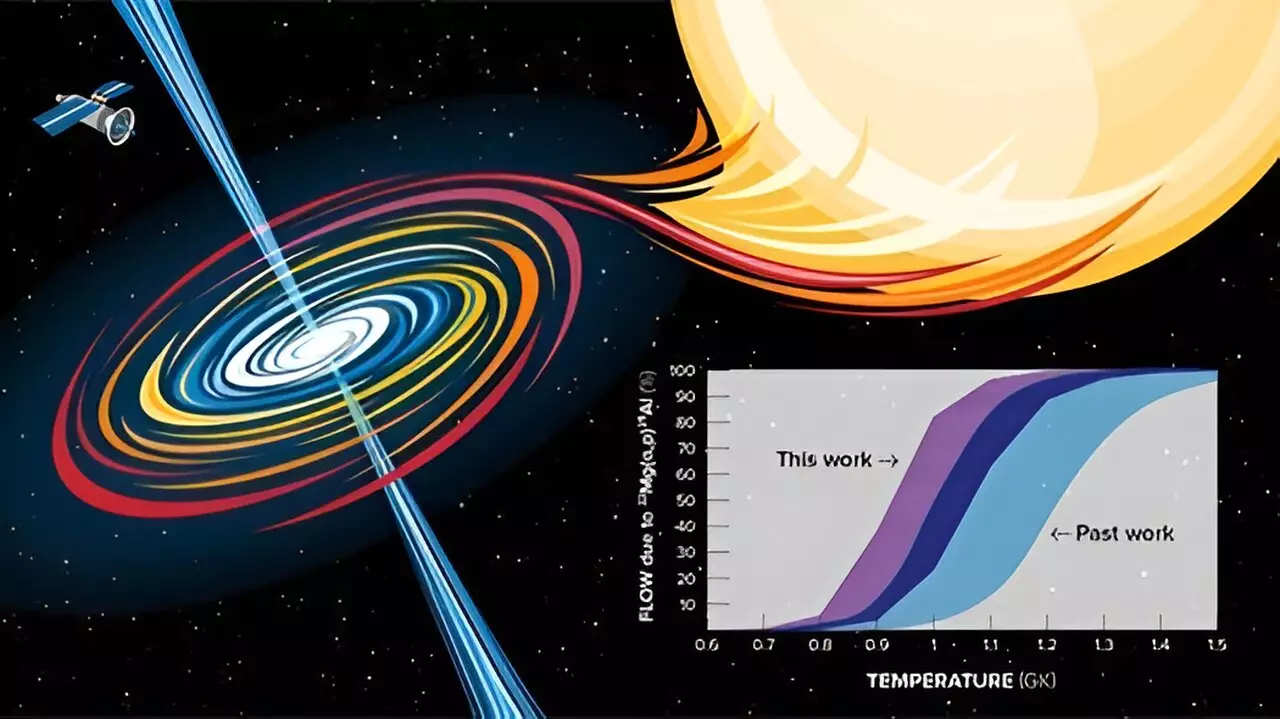X-ray bursts (XRBs) are a fascinating cosmological phenomenon that occur when a neutron star undergoes a violent explosion as it absorbs material from a companion star. These explosions are fueled by a cascade of thermonuclear reactions on the neutron star’s surface, leading to the creation of heavy chemical elements. A recent study published in Physical Review Letters sheds light on one of these reactions, specifically the 22Mg(α,p)25Al reaction involving magnesium-22 and helium-4.
The 22Mg(α,p)25Al reaction plays a crucial role in informing models of XRBs and understanding the reaction mechanisms that drive these explosive events. According to the researchers, the rate of this reaction is four times higher than the previously measured value. This new finding has significant implications for our understanding of XRBs and the synthesis of heavy elements in these explosive environments.
To measure the 22Mg(α,p)25Al reaction, scientists employed an innovative experimental approach using the Argonne Tandem Linac Accelerator System (ATLAS) at Argonne National Laboratory. By utilizing inverse kinematics and developing an in-flight radioactive beam, the researchers were able to recreate the conditions relevant to XRBs. The beam was directed towards the MUlti-Sampling Ionization Chamber (MUSIC) detector filled with pure helium gas, allowing for precise measurements of the reaction.
The experimental results revealed a new direct measurement of the angle and energy-integrated cross-section of the 22Mg(α,p)25Al reaction. The cross-section, which indicates the probability of the reaction occurring, was found to be significantly higher than previously thought. This elevated probability suggests that the 22Mg waiting point is bypassed more frequently by the 22Mg(α,p)25Al reaction than previously believed. Furthermore, the researchers discovered that the reaction initiates at lower temperatures than originally assumed, providing valuable insights into the nucleosynthesis process in XRBs.
The study’s findings have important implications for the field of XRB research. By accurately determining the rates of key reactions, such as the 22Mg(α,p)25Al reaction, scientists can enhance their understanding of the nucleosynthesis reaction flow through the waiting points in XRBs. This improved knowledge is essential for refining models of XRBs and unraveling the complex processes that occur during these explosive events.
The investigation of the 22Mg(α,p)25Al reaction represents a significant advancement in our understanding of XRBs and the nuclear reactions that drive these cosmic explosions. By leveraging innovative experimental techniques and sophisticated instrumentation, scientists have been able to shed light on the intricate processes that govern XRBs, offering valuable insights into the formation of heavy elements in the universe.



Leave a Reply